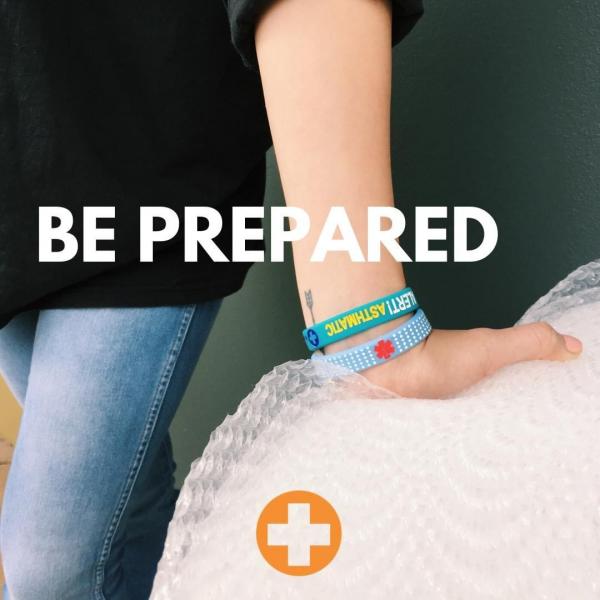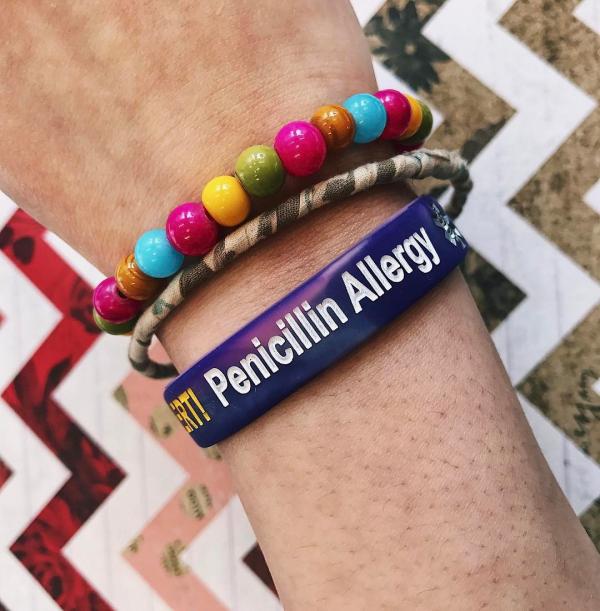Allergy
-
10 Conditions that Require You to Wear a Medical ID Bracelet
As a A medical ID bracelet could save your life. They help you share information with your doctor in an emergency — even if you're not awake. We recommend you wear a medical ID bracelet or carry a medical alert ID card if you have: Continue reading → -
What Details Should Be Recorded on My Allergy ID Bracelet
Anyone with allergies understands how scary an allergic reaction can be. For most people, allergies are simply something they deal with, with no severe problems other than mild annoyance. This changes when you have severe or life-threatening allergic reactions. The resulting anaphylactic shock can even cause death. When you engrave allergy information on your allergy ID bracelet, be concise. Not only can this save your life, but it can help you get treatment faster. In other words, if you have food allergies, drug allergies or even insect allergies, and you need an allergy ID bracelet for your important medical records, this is for you. First, we'll go over what an allergy ID bracelet is. Second, we'll cover the different types of allergy medical ID bracelets. Finally, we'll end with the outcomes of not having one. Continue reading → -
Dairy Intolerance 101: Causes, Symptoms, and Prognosis
Dairy intolerance, also known as dairy insensitivity or lactose intolerance, is the reduced ability of the body to digest milk sugars. In some instances, intolerance arises when the body develops an allergy to a milk protein known as casein. Genetic factors also largely influence dairy intolerance. People of North European descent have only a 25% chance of developing the condition, while the rest have a 75% chance. Although a vast majority of the population suffer from this disorder, they may not be aware of it. They often end up confusing the symptoms of dairy intolerance with other medical conditions.
Continue reading →
Genetic factors also largely influence dairy intolerance. People of North European descent have only a 25% chance of developing the condition, while the rest have a 75% chance. Although a vast majority of the population suffer from this disorder, they may not be aware of it. They often end up confusing the symptoms of dairy intolerance with other medical conditions.
Continue reading → -
Penicillin Allergy Wristband: How can it help?
Most Australians will undergo treatment using penicillin at some point in their lives. The vast majority of these individuals will experience no adverse reactions whatsoever. However, penicillin allergies still represent a clear danger. And they are most common in individuals aged between 20 and 49. We’ve put together a guide to help you understand the symptoms of a penicillin allergy, and also to explain how adequate testing. Especially how the wearing of a penicillin allergy wristband can help you live a normal, healthy life. Continue reading → -
Gluten Allergy Wristband - Ensure Your Child’s Dietary Needs Are Met
A gluten allergy wristband can help children who suffer from coeliac disease avoid gluten. With this serious food allergy, it is so important that people are made aware that your child requires a special diet in order to avoid the pain and suffering that comes from consuming the wrong foods. Many pre-sch ools recommend children wear a gluten allergy wristband or gluten allergy bracelet stating that they have severe reactions to wheat, oats, barley and rye, as often the children in their care are unable to speak for themselves in regards to their condition. A properly labeled medical id band helps to prove that you are not just been an overprotective parent and that your child has a genuine medical condition which requires a specialised diet. Continue reading →
ools recommend children wear a gluten allergy wristband or gluten allergy bracelet stating that they have severe reactions to wheat, oats, barley and rye, as often the children in their care are unable to speak for themselves in regards to their condition. A properly labeled medical id band helps to prove that you are not just been an overprotective parent and that your child has a genuine medical condition which requires a specialised diet. Continue reading →




